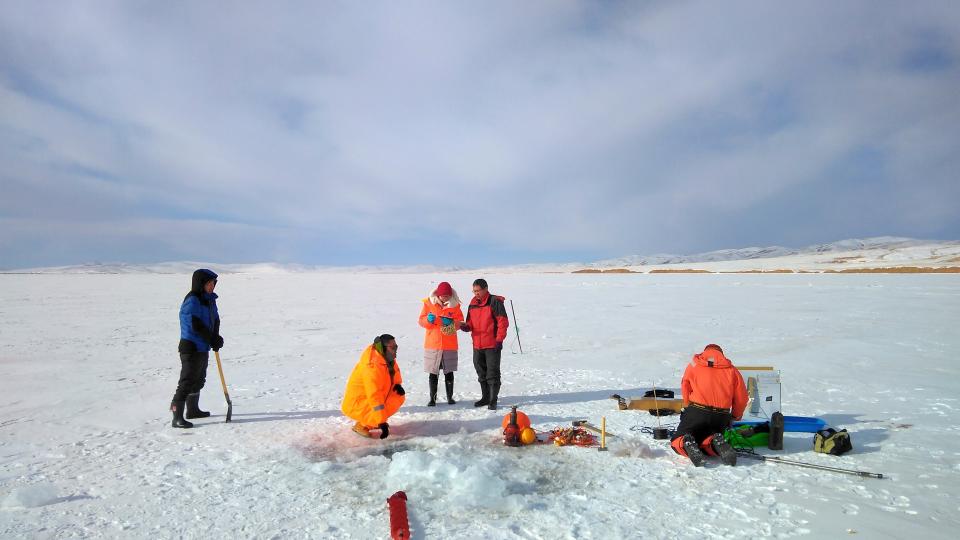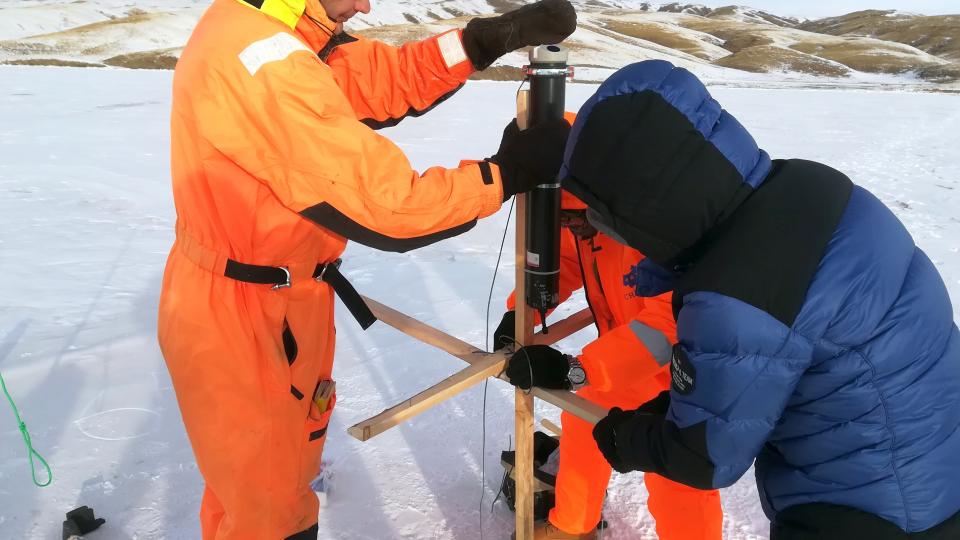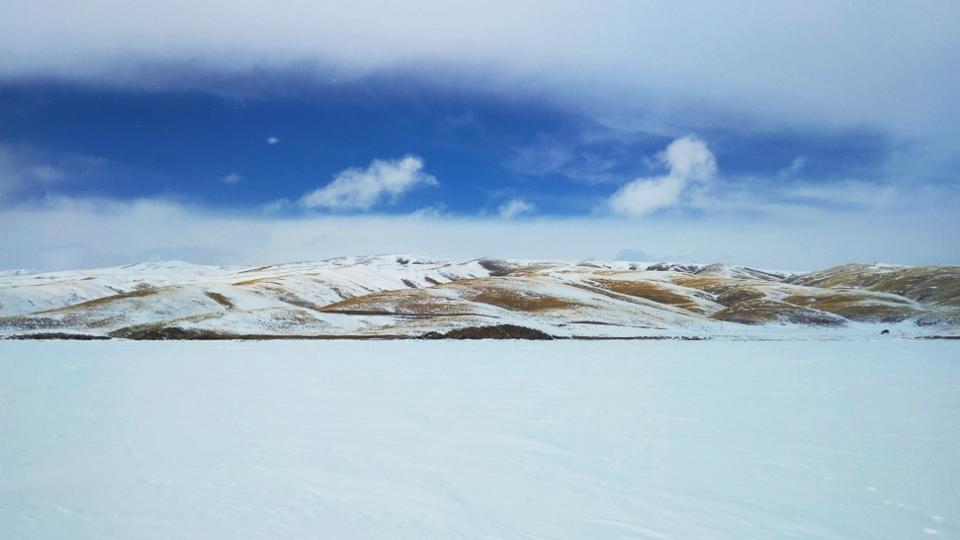IceTMP: Ice cover on lakes of Tibet and Inner Mongolia
Short profile
Duration
Lakes are key components of the climate system, representing sensitive indicators of the regional climate change and mediating the air-land interaction on regional to global scales. The role of lakes is especially important in the hydrological cycle of alpine and arid areas of the Tibetan Plateau and the Mongolian Plateau. However, the response of lakes to the climate change of these remote regions remains not fully quantified to date due to the lack of observational data from these regions. An essential feature of the lake systems in these two largest arid climate zones is the several months long ice-covered period. Formation and melt of the ice cover on lakes has a strong effect on the
land-atmosphere interaction and on internal physical and biogeochemical processes in lakes. Herewith, correct representation of ice cover and under-ice heat and mass transport in regional and global climate models is crucial for understanding of the large-scale response to climate change. Acquiring interdisciplinary observational data from ice-covered lakes of the remote regions is especially challenging. Joining of experience and resources from international research teams is the most effective way to obtain a significant advance in this area of geosciences.
The overarching goal of the proposed project consists in establishing of an international research network aimed at filling the knowledge gap about ice-covered lakes as crucial, but poorly investigated components of the hydrological and climatic system of Qinghai-Tibet and Mongolian Plateau
We aim
- to obtain first ever detailed observational data on under-ice thermal and biogeochemical conditions in these two key regions,
- to validate and improve existing lake parameterization schemes for climate models, and
- to develop future scenarios of the seasonal ice cover variations under the climate change.
We will establish an observational network on two lakes in Tibet and one lake in Inner Mongolia. The newly obtained data on the heat budget of the Chinese Plateau lakes will be analyzed in comparison with the Arctic lake dynamics investigated by the German partner, providing an added value to the collaboration. As a result, improved parameterizations of the seasonal ice cover will be developed and integrated into the state-of-the-art lake models used in climate system modeling.
The results expected as an outcome of the proposed project include: (a) Establishing of a core research consortium for interdisciplinary climatological studies on hydrological regime of alpine and arid regions; (b) obtaining first comprehensive observations on the under-ice conditions in lakes of Tibetan and Mongolian Plateaus and providing the first insight into the heat budget of the air-ice-water system; (c) Elaboration of parameterizations of the ice cover budget in arid and alpine conditions aimed at improvement of lake ice representation in climate models; (d) estimation of ecological conditions and physical-biological interactions in ice covered lakes with perspective to help mitigation of the climate change impact on lake water quality.

Field work on Lake Ngoring, Tibetan Plateu. | Photo: Tom Shatwell

Field work on Lake Ngoring, Tibetan Plateu. | Photo: Tom Shatwell

Field work on Lake Ngoring, Tibetan Plateu. | Photo: Tom Shatwell

Field work on Lake Ngoring, Tibetan Plateu. | Photo: Tom Shatwell

Lake Ngoring, Tibetan Plateu. | Photo: Tom Shatwell
German Federal Ministry of Education and Research BMBF (Project ID 01LP2006A)
National Key Research and Development Program of China (Project ID 2019YFE0197600)



